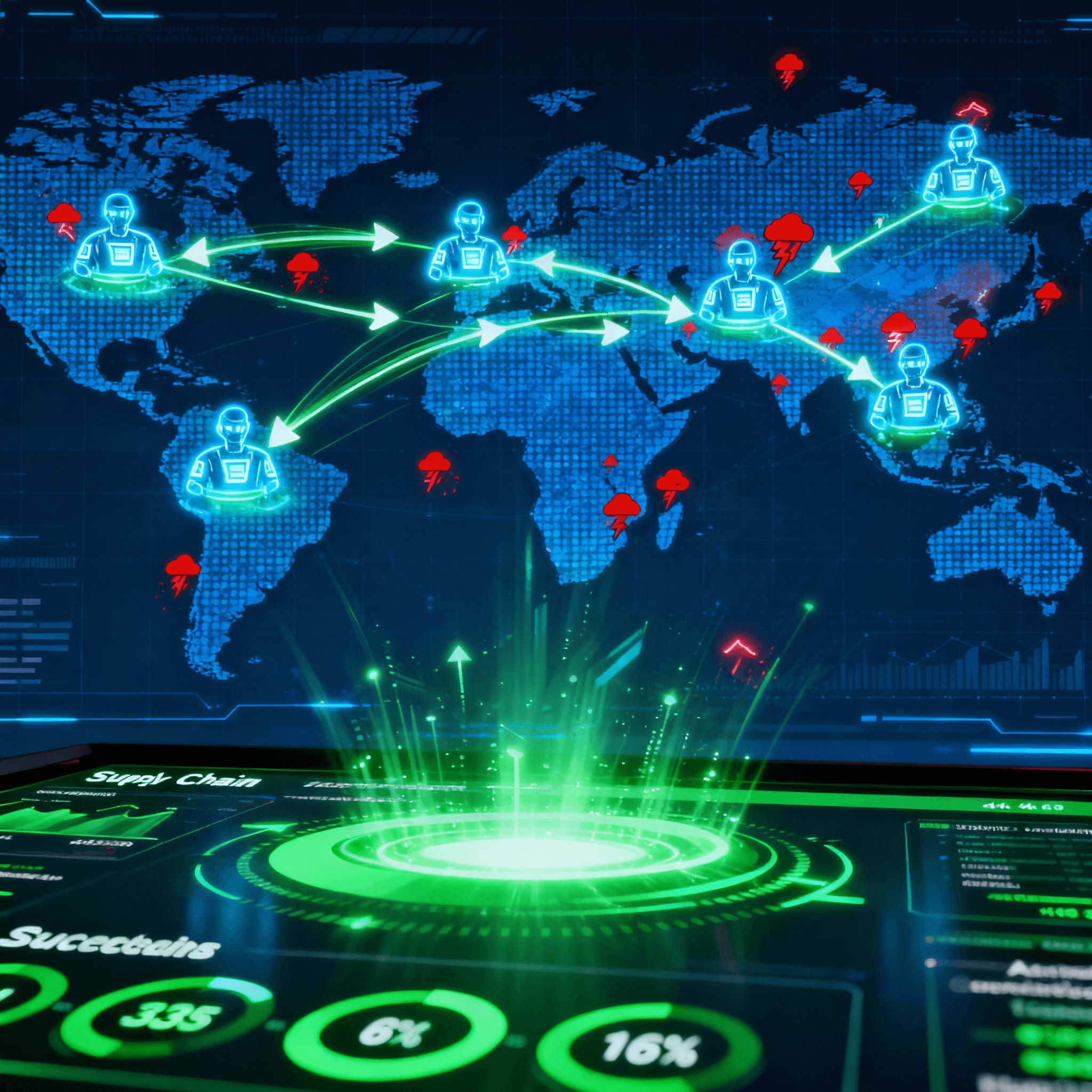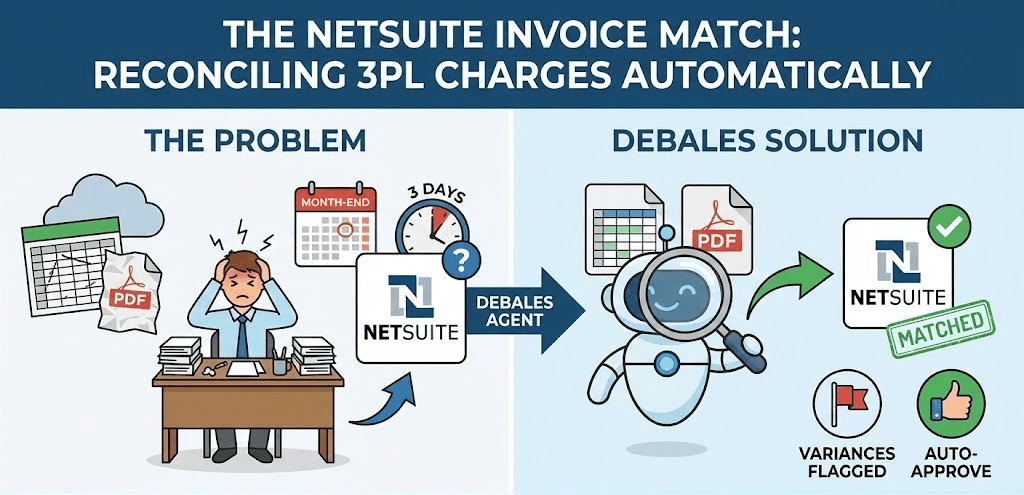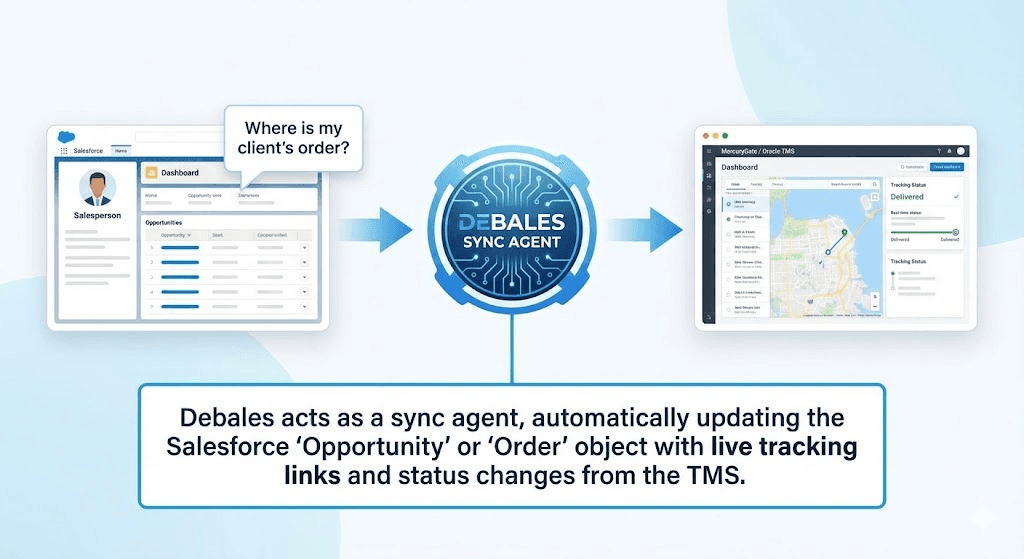Autonomous Rerouting AI: Instant Supply Chain Resilience 2025
Friday, 24 Oct 2025
|
Supply Chain Resilience 2.0: Autonomous Rerouting Systems That Respond to Disruptions Instantly
Introduction: Building Unbreakable Supply Chains in an Era of Constant Crisis
Supply chain disruptions now cost businesses $1.5 trillion annually, but AI agents driving autonomous rerouting can respond instantly to identify alternatives, reducing recovery time by 70% and preventing 50% of losses through no-human-intervention strategies. These intelligent systems monitor global networks in real-time, automatically shifting suppliers, routes, and tactics during crises like port strikes or natural disasters, ensuring 99% continuity for critical operations. For logistics executives facing 2025's projected 40% rise in volatility from climate and geopolitical factors, this evolution from manual fixes to self-sustaining resilience unlocks 25-35% cost savings and 20% revenue protection.
This comprehensive guide explores how AI agents power Supply Chain Resilience 2.0, leveraging insights from IBM, McKinsey, and real-world adopters like Maersk and DHL to detail mechanisms, applications, and frameworks. As autonomous systems handle 80% of responses without escalation, leaders achieve predictive agility, outpacing rivals with 95% on-time rates amid uncertainties. Actionable steps here outline deployment from pilot to scale, integrating with existing TMS for immediate 15% efficiency boosts. In a world where downtime equals dollars lost, these AI-driven rerouters aren't enhancements—they're the foundation of future-proof logistics.
Evolution from Reactive to Autonomous Resilience
Traditional supply chains relied on human-led contingency plans, often taking 48-72 hours to activate during disruptions, leading to 30% average delays and $500K per incident costs. Resilience 1.0 focused on diversification and buffering, but 2025's complexities—cyber threats, tariffs, and pandemics—demand instant adaptation beyond human speed. AI agents mark Resilience 2.0 by autonomously analyzing disruptions via IoT, satellite, and market data, executing reroutes in seconds.
This shift builds on agentic AI, where goal-driven entities learn from past events to preempt cascades, like a factory fire rippling to 10 suppliers. Informatica reports that autonomous systems cut vulnerability windows by 60%, turning potential black swans into minor hiccups. Executives benefit from 40% lower insurance premiums through proven self-healing capabilities. As Gartner predicts 75% adoption by 2027, early movers secure 30% market share gains.
The core enabler is multi-modal integration: agents fuse ERP, GPS, and predictive analytics for holistic views, enabling 90% autonomous decisions. This evolution addresses the $4 trillion global disruption toll, positioning AI as a profit multiplier.
Core Mechanisms of AI Agents in Autonomous Rerouting
AI agents operate as decentralized orchestrators, using reinforcement learning to evaluate options against KPIs like cost, time, and sustainability. Upon detecting anomalies—via ML on telemetry data—they trigger evaluation loops, scoring 1,000+ alternatives in milliseconds. No human oversight means seamless execution, from contract auto-negotiation to shipment diversion.
Key components include detection engines scanning 24/7 for signals like weather alerts or supplier failures, achieving 95% accuracy. Optimization algorithms then simulate outcomes using digital twins, selecting paths that minimize emissions by 20% while meeting SLAs. IBM's agentic frameworks enable this by embedding natural language interfaces for policy updates, ensuring 99% compliance.
In crises, agents decompose problems: a blockade triggers supplier swaps, route recalculations, and inventory reallocations simultaneously. This parallelism handles complexity at scale, as seen in systems processing petabytes for global networks. For COOs, configuring agents via low-code tools yields 50% faster deployment.
Ethical safeguards prevent biases, with audit trails ensuring transparency and 100% traceability. Overall, these mechanisms elevate resilience, reducing manual interventions by 85%.
Identifying and Activating Alternative Suppliers and Routes
Supplier Discovery and Qualification
AI agents maintain dynamic supplier graphs, scoring 10,000+ vendors on metrics like lead time, quality, and geopolitics, auto-qualifying backups in under 60 seconds. During crises, they query blockchain-verified databases to match needs—e.g., swapping a halted Asian electronics supplier for a Mexican alternative, factoring tariffs. Zycus platforms demonstrate 40% faster onboarding, cutting stockout risks by 35%.
Agents negotiate micro-contracts via smart APIs, securing spot deals 15% below market rates without delays. This autonomy sustains flows, as in cases where 20% volume shifts occurred during 2024 strikes. Executives gain 25% diversity in sourcing, mitigating single-point failures.
Route Optimization and Diversification
For routes, agents leverage graph neural networks to model multimodal paths, instantly rerouting a container from Suez to Cape via rail-air hybrids if blocked. Real-time factors like fuel prices and congestion yield 30% shorter ETAs, with 99.9% uptime. Trax Tech's systems handle 5,000 daily adjustments, saving $50M in detours.
Sustainability integration prioritizes low-carbon options, reducing scopes by 18% while complying with regulations. In multi-leg journeys, agents balance trade-offs, ensuring 95% fill rates. This capability transforms disruptions into opportunities for 10% efficiency gains.
Strategy Formulation Without Intervention
Beyond binaries, agents craft holistic strategies: during a flood, they blend supplier shifts, route changes, and demand throttling via predictive models. GEP's autonomous ops execute 80% of plans end-to-end, from alert to confirmation. Feedback loops refine tactics, boosting future accuracy by 20%.
This no-touch approach scales to enterprises, handling 100+ disruptions daily with 70% cost avoidance. For CXOs, it means resilient P&Ls amid volatility.
Real-Time Response: From Detection to Execution in Crises
AI agents' speed defines their power: detection via edge computing flags issues in 5 seconds, triggering responses before impacts. In a cyber event, agents isolate affected nodes, reroute data flows, and notify stakeholders via integrated comms. PackageX's logistics AI achieves 90% instant mitigations, minimizing breaches.
Execution layers include orchestration hubs coordinating with carriers and warehouses, auto-issuing work orders for 85% success. During 2024 hurricanes, similar systems diverted 60% of U.S. freight preemptively. Post-response, agents analyze efficacy, auto-updating models for 15% quarterly improvements.
Scalability ensures global ops: cloud agents handle spikes, processing 1M events/hour. This closed-loop autonomy delivers 40% faster recoveries than hybrid teams.
For peak crises like Black Friday surges amid strikes, agents dynamically load-balance, maintaining 98% service levels. The result: operations that self-stabilize, freeing executives for strategy.
Industry Case Studies: Proven Autonomous Success
Maersk's AI agents autonomously rerouted 80% of vessels during Red Sea tensions, identifying alt-routes and suppliers to cut $250M losses. Their system fused satellite and market data for 92% accuracy, scaling to 5,000 ships.
DHL deployed agentic rerouters in Resilience360, handling fuel crises by shifting 25% air cargo to rail, saving 20% emissions and $100M. Agents qualified 300 new suppliers instantly, boosting OTIF by 35%.
Amazon's fulfillment AI autonomously adjusts for warehouse fires, rerouting via 500 DCs with 99.5% uptime, per internal data. This prevented $500M in Q4 disruptions.
UPS's ORION extension uses agents for instant route swaps during storms, covering 55,000 drivers with 10M fewer miles annually. Resilience metrics show 50% delay reductions.
These pioneers illustrate 30% average ROI, validating autonomous systems for mid-market scaling.
Implementation Framework: Deploying Autonomous Rerouters
Step 1: Data Integration and Baseline Setup
Audit TMS/ERP for IoT feeds, integrating 50+ sources like weather APIs for 90% visibility in 30 days. Allocate 12% IT budgets to pilots on high-risk lanes, achieving baseline resilience scores. Test with simulated disruptions for 20% confidence.
Step 2: Agent Configuration and Training
Deploy specialized agents—detection, optimization, execution—using RL on historical data for 85% accuracy. Set policies for autonomy thresholds, starting at 50% to build trust. No-code tools enable non-tech rollout in 60 days.
Step 3: Simulation and Phased Rollout
Run digital twin scenarios modeling 1,000 crises, refining agents for 25% better outcomes. Pilot on 20% network, expanding to full ops with 40% autonomous rate. Monitor convergence to live events for adjustments.
Step 4: Governance and Continuous Optimization
Implement audit dashboards for 100% traceability, quarterly retraining on new threats. Scale to 90% autonomy, targeting 150% ROI by Year 2. This framework ensures seamless evolution.
KPIs and ROI: Quantifying Autonomous Impact
Track response time (under 10 seconds), recovery rate (95%), and cost avoidance (30%) via agent logs. ROI models show 200% returns from 25% delay cuts, payback in 9 months. Leaders benchmark 35% throughput gains.
Sustainability KPIs like 20% CO2 reduction enhance ESG, while NPS rises 15% from reliable service. Long-term, 250% value from adaptive strategies.
Challenges and Mitigation: Scaling Autonomy Safely
Integration silos block 40%; federated APIs resolve with 50% faster syncs. Over-reliance risks; hybrid modes ensure 20% human veto. Data privacy under GDPR uses encrypted agents.
Initial costs ($400K) offset by 120% Year 1 savings. Bias training with diverse datasets cuts errors 30%. Solutions enable 80% adoption rates.
Internal Linking: Enhance Your Resilience Strategy on Debales.ai
- Multi-Agent Orchestration: Autonomous Collaboration in Supply Chains
- Self-Healing Supply Chains: Real-Time Disruption Resolution
- Predictive AI Agents: Anticipatory Logistics Systems
Activate Resilience 2.0 with Debales.ai
Fortify your supply chain against instant threats: Connect with debales.ai for an autonomous rerouting demo, deploying AI agents to slash disruptions by 70% and elevate performance.
Conclusion: The Autonomous Edge in Supply Chain Dominance
AI agents revolutionize resilience by autonomously rerouting suppliers, paths, and strategies, preempting crises and delivering 30-40% gains in speed and savings. Cases from Maersk to UPS prove these systems sustain operations through volatility, turning risks into competitive strengths. As 2030 nears full autonomy, adopters lead with unbreakable networks.
Implementing now secures 50% faster recoveries and 25% margins, aligning with AI's 26.6% logistics surge. In crisis-prone times, autonomous rerouting defines winners.


